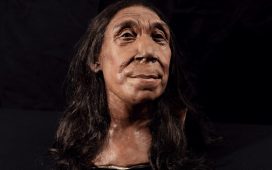
The world of Optical Character Recognition (OCR) has changed exponentially over the last few years. So, let’s take a look at some developments in application and the software itself, and how this can be leveraged at an organisational level.
Livestream Accessibility
OCR technology has long since been utilised in live streaming applications, particularly in the entertainment industry. Take something like online casinos, for example – as more platforms offer live casino games, the more prevalent OCR becomes. When players try their hand at Lightning Roulette they will access a live roulette table and a real croupier, live streamed from a studio. As the name suggests, the game is pretty fast-paced.
To ensure that results are recorded by the platform for monitoring, and that no player misses a win, OCR technology is used to capture where the bets are placed, and what number the ball lands on when the roulette wheel is spun, improving the fairness, immersiveness, and authenticity of gameplay. This same logic can be applied to commercial livestreams for product launches, webinars, and virtual conferences alike. By providing attendees with the information in multiple formats (such as converting written text or product names into digital captions), this improves the accessibility of the information.
AI-Assisted Digitisation
Of course, artificial intelligence (AI) has become a buzzword over recent years, so we couldn’t not mention it. In traditional business applications, OCR technology can be used to digitise physical documents like invoices, paychecks, or applications – think of it like scanning, but creating a readable text document rather than a flat image. With AI, however, this process can be completely automated, improving the speed, accuracy, and efficiency of the process.
Many tech giants like the Samsung Group and Adobe are already patenting AI-assisted OCR technology. Samsung in particular mainly aims to develop client devices that have a trained neural network, allowing businesses to streamline processes, improve the accuracy of data, reduce operational costs, bolster readability and translation across multiple languages, provide data analysis, and ultimately ensure compliance.

Searchable Archives
Not only can OCR software help to store current documents, but it can also be used to digitise historical records. Recently, a project conducted at Virginia Tech in the US has used OCR to digitise 20th century real estate documents to create a comprehensive archive. This means that researchers no longer have to trawl through hundreds of physically preserved, delicate documents. Instead, the text is extracted from the physical documents into a digital system, which allows users to narrow down their search using keywords. Not only this, but converting the documents into a digital format improves readability, improving accessibility.
With this in mind, businesses can build up a similar historical archive, even if its not quite as large as Virginia Tech’s! From invoices to financial statements, updated business models, your personal CVs, portfolios, and more, OCR can allow you to digitise historic records of the business which can then be accessed with a quick search. This can allow you to do your due diligence, quickly access stats for presentations, and compare financial position to historic data as easily as possible.
As you can see, OCR technology can have many benefits for businesses – both the way we are using it and the software behind it is consistently developing. Whether it is to digitise documents, improve accessibility, or even create a searchable archive, the possibilities of OCR are endless.











